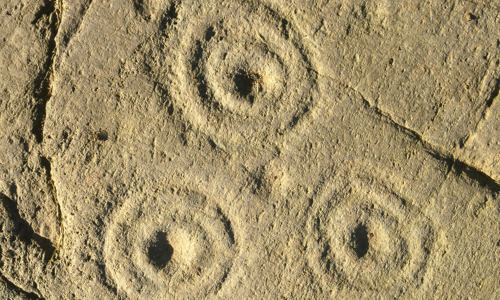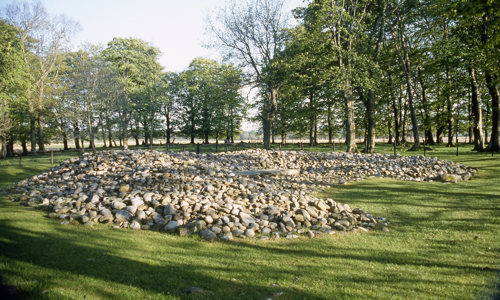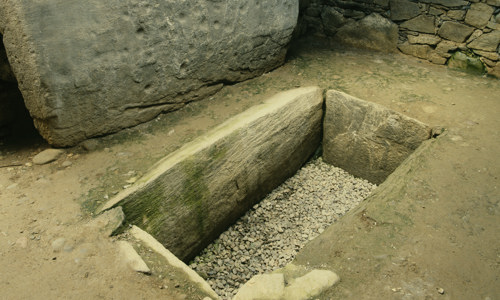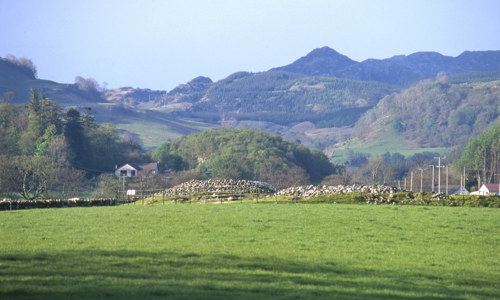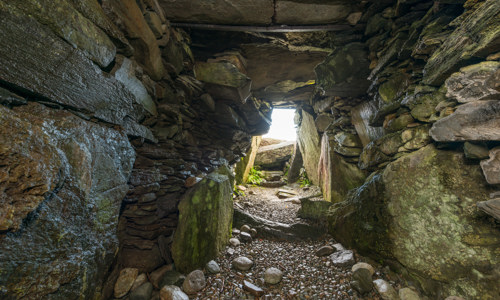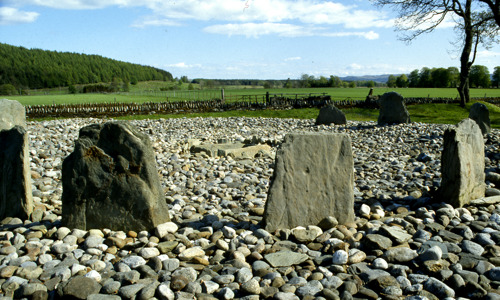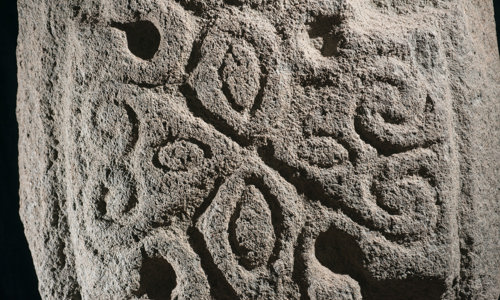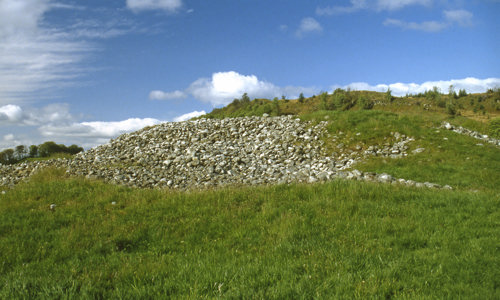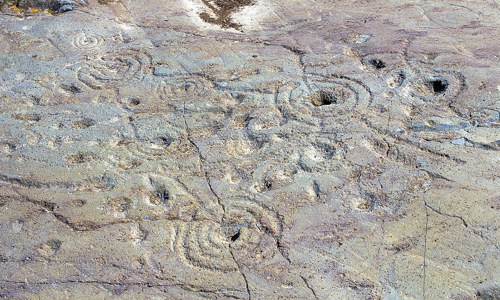Overview
Visit a tomb set apart from the others of Kilmartin Glen, on a shaded, tree-covered terrace.
Like most of the other Bronze Age cairns in Kilmartin Glen, it is a large, round burial mound about 4,000 years old. But Dunchraigaig stands apart from the others, and is not considered to be part of the linear group.
It’s unusual on the inside, too: excavations in the 1800s found remains of up to 10 individuals in one cist, dug directly into the ground and capped with a massive 3.8m stone.
In 2021, it was also revealed that Scotland's earliest animal carvings had been discovered inside the cairn. Thought to be between 4,000 and 5,000-years-old, the carvings include depictions of two male red deer, which are considered to have been the largest deer species in Scotland during this time. Full-grown antlers can be seen on both animals, while anatomical detail including a short tail can be seen on one. Three other quadrupeds are also visible, two of which are thought to be juvenile deer.
To examine the carvings without colour, go to this model.


